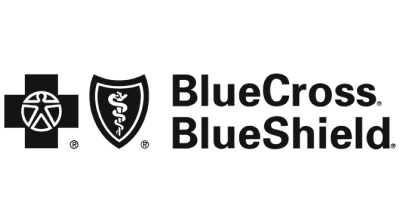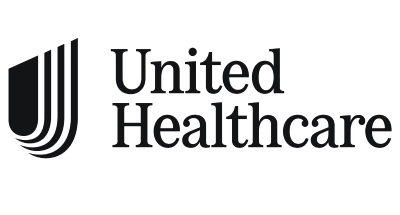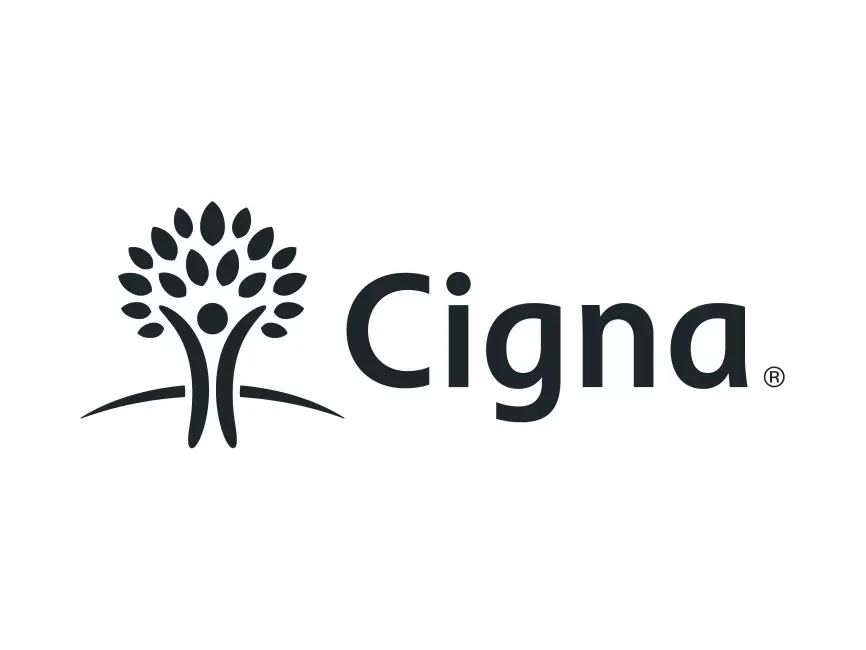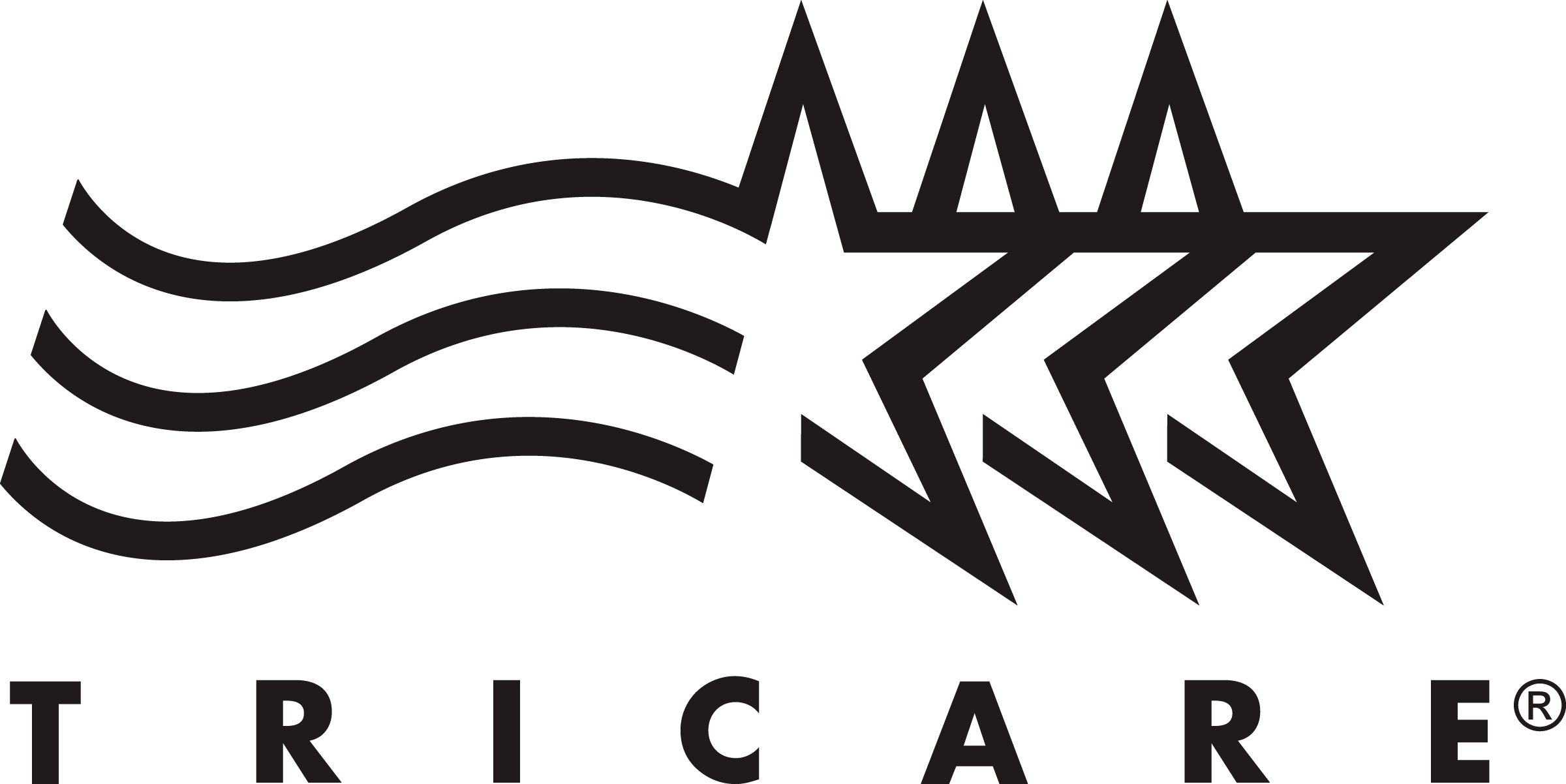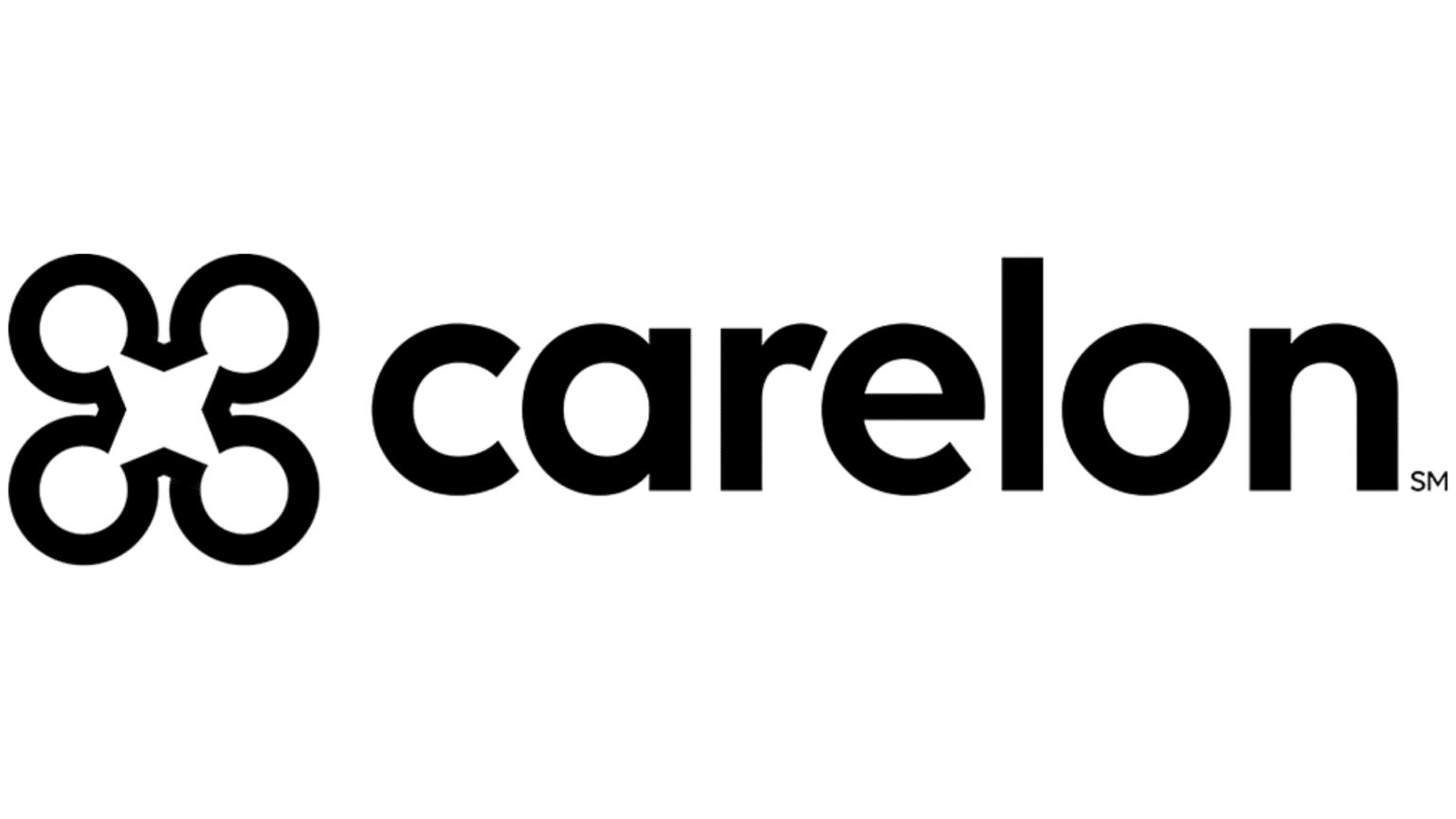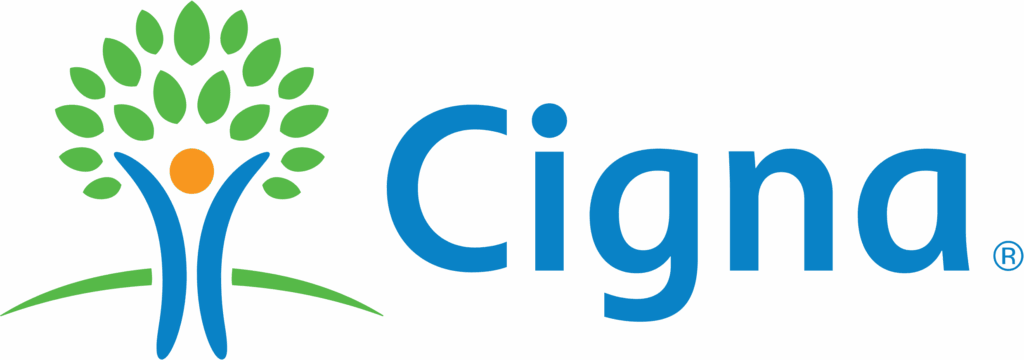Understanding Addiction Trends in California
California is a state of immense size and variety, encompassing everything from bustling metropolitan areas and Silicon Valley’s tech hubs to vast agricultural regions, rugged coastlines, and mountain communities. This diversity is reflected in its population, economy, culture, and, inevitably, its public health challenges, including substance use disorders. Understanding the general picture of addiction across the state provides a necessary foundation before delving into the specifics of NorCal and SoCal.
Statewide statistics paint a concerning picture. California faces significant challenges related to opioid addiction, methamphetamine use, alcohol dependence, and rising concerns around prescription drug misuse and the emergence of potent synthetic substances like fentanyl. The opioid crisis, while having national roots, has manifested differently in various California communities, impacting both urban and rural populations. Methamphetamine remains a persistent problem, particularly in certain demographics and geographic areas. Alcohol continues to be the most commonly abused substance, contributing to a wide range of health and social issues. The increasing availability and potency of fentanyl pose a critical threat statewide, leading to a surge in overdose deaths.
Beyond specific substances, several overarching factors influence addiction trends across California. Socioeconomic status plays a significant role, with higher rates of substance use disorders often correlating with poverty, unemployment, and lack of access to education and healthcare. Mental health conditions are frequently co-occurring with substance use disorders, forming a
dual diagnosis that requires integrated treatment. Trauma, stress, and social isolation are also major contributors to addiction vulnerability. Access to and the cost of housing, particularly in California’s expensive real estate market, can exacerbate stress and instability, increasing the risk of substance use. The state’s diverse population means that cultural factors, language barriers, and specific community norms can also influence substance use patterns and the willingness to seek help.
While these issues are present throughout California, their intensity, specific manifestations, and the demographics most affected can vary significantly between the northern and southern parts of the state.
The key differences between Northern and Southern California addiction trends often relate to:
1. Substance Prevalence: Certain drugs may be more readily available or widely used in one region compared to the other, influenced by drug trafficking routes, local economies, and cultural factors.
2. Demographic Impact: The specific populations most affected by addiction can differ based on regional demographics, economic bases (e.g., tech in the Bay Area, agriculture in the Central Valley, entertainment in SoCal), and cultural concentrations.
3. Socioeconomic Factors: While both regions have disparities, the nature and distribution of poverty, homelessness, and economic stress can differ, leading to varied addiction challenges.
4. Access to Resources: The concentration and types of treatment facilities, harm reduction services, and community support programs can vary significantly.
Recognizing these differences is not about creating a rigid divide but understanding that addiction is a localized issue that requires localized solutions, even within a large state. This understanding informs how treatment providers, like Compassion Recovery Center, can best serve individuals across California, offering tailored support that acknowledges their specific context. If you or someone you know is struggling with substance abuse anywhere in California, understanding these trends can be a helpful part of the journey toward finding appropriate help. Exploring options like remote treatment can provide access to care regardless of your specific location within the state. You can easily
check insurance coverage for remote programs to see how accessible treatment can be.
NorCal Addiction Trends
Northern California, often characterized by its technological innovation, natural beauty, and diverse cultural hubs, presents a distinct picture when it comes to addiction trends. This vast region, stretching from the San Francisco Bay Area up to the Oregon border and encompassing the Central Valley, the Sierras, and the rugged coastline, is far from monolithic. Addiction patterns vary significantly within NorCal itself, depending on whether you are in a densely populated urban center, a suburban tech hub, a rural agricultural community, or a remote mountain town. However, some broader trends can be identified.
Common substances abused in Northern California reflect both statewide issues and regional specifics. Methamphetamine has long been a significant concern, particularly in the Central Valley and some more rural areas, where it is often associated with economic hardship and agricultural communities. Opioid addiction remains a serious challenge, though the specific dynamics can differ. While prescription opioid misuse has been a pathway to addiction statewide, the increasing prevalence of fentanyl, often mixed with other drugs or sold as counterfeit pills, is driving a rise in overdose deaths across NorCal, impacting both urban and rural populations. Heroin also continues to be present. Alcohol is widely abused across all demographics and geographic areas, consistent with national patterns.
Beyond these major substances, specific trends can emerge. In areas like the Bay Area, cocaine and club drugs may be more prevalent in certain social circles. The legalization of cannabis has shifted patterns of use and access, though concerns about problematic use, particularly among younger individuals, persist. The rise of synthetic cannabinoids and other novel psychoactive substances also poses a challenge, though perhaps less widespread than the traditional drugs.
Demographic factors significantly influence these
NorCal addiction trends. The tech industry in the Bay Area, while contributing to immense wealth, also creates high-pressure environments where substance use might be linked to stress, long hours, and a culture that sometimes normalizes stimulants or alcohol for coping. The high cost of living throughout coastal NorCal creates significant stress and instability, potentially contributing to substance use as a coping mechanism. In contrast, the Central Valley faces persistent economic challenges, higher poverty rates, and limited access to resources, which correlate with higher rates of methamphetamine and opioid use. Rural areas throughout NorCal grapple with geographical isolation, lack of transportation, limited healthcare access (including addiction treatment), and often higher rates of unemployment and poverty, exacerbating substance use issues. Specific ethnic and cultural communities within NorCal may also have distinct patterns of substance use influenced by cultural norms, historical factors, and access to culturally competent care.
Unique challenges faced in Northern California include:
1. Geographical Barriers: The vastness and diverse topography of NorCal mean that accessing in-person treatment can be incredibly difficult for residents of rural, mountainous, or remote areas. Travel time, transportation costs, and the scarcity of local facilities are major hurdles.
2. Economic Disparities: The stark contrast between areas of immense wealth (like parts of the Bay Area) and areas of significant poverty (like parts of the Central Valley) creates different sets of stressors and resource availability issues that influence addiction.
3. Limited Treatment Capacity in Rural Areas: While urban centers like San Francisco, Oakland, and Sacramento have treatment options, rural counties often have very few, if any, local facilities, leaving residents with few choices beyond traveling long distances.
4. Impact of Natural Disasters: NorCal is prone to wildfires, which can cause significant trauma, displacement, and disruption of services, potentially increasing vulnerability to substance use or interrupting recovery.
5. Specific Substance Challenges: The continued presence of methamphetamine and the rising threat of fentanyl require targeted prevention and treatment strategies tailored to the specific populations and routes of administration prevalent in the region.
These challenges highlight the critical need for flexible, accessible, and geographically independent treatment options. Remote telehealth services are uniquely positioned to address the access issues faced by many in Northern California, providing individuals in rural or underserved areas with direct connections to qualified addiction professionals and evidence-based treatment programs without the need for travel. If you are in Northern California and finding it difficult to access local treatment, exploring options like a
Virtual IOP Program could be a vital step in your recovery journey. Compassion Recovery Center serves clients throughout California, including Northern California, offering comprehensive remote care that can help overcome geographical barriers.
SoCal Addiction Trends
Southern California, famous for its sprawling metropolises, entertainment industry, diverse populations, and extensive coastline, presents its own unique landscape of addiction trends and challenges. From Los Angeles and San Diego to the Inland Empire and Orange County, the region is characterized by dense urban areas, affluent suburbs, border communities, and growing inland populations. Like NorCal, the specific patterns of substance use vary within SoCal, but overarching trends emerge.
Common substances abused in Southern California often include those prevalent statewide but with potentially different levels of intensity and impact on specific communities. Methamphetamine remains a significant issue, influenced partly by its proximity to international borders and its presence in various urban and suburban areas. Opioid addiction, including prescription opioids, heroin, and increasingly fentanyl, is a critical concern across SoCal, contributing significantly to overdose rates, particularly in counties like Los Angeles, San Diego, and Orange County. The availability of fentanyl, often pressed into counterfeit pills or mixed with other substances, is a major driver of the overdose crisis in the region. Cocaine is also widely available and used, especially in urban and more affluent areas. Alcohol remains the most pervasive substance, contributing to a high burden of health and social problems throughout SoCal.
Beyond these, the diversity of SoCal’s population and its international connections influence other substance trends. The presence of large immigrant communities can affect substance use patterns based on cultural norms, assimilation stress, and access to culturally sensitive care. Border regions face unique challenges related to drug trafficking and access to substances. Specific cultural or social scenes (e.g., entertainment industry, nightlife) may be associated with higher rates of certain substance use or specific drug types. Prescription drug misuse, including benzodiazepines and stimulants, is also a concern across various demographics. Concerns around
social media addiction treatment and other behavioral addictions may also be more prominent in areas influenced by technology and social trends.
Demographic factors play a crucial role in shaping
SoCal addiction resources and trends. The entertainment industry in Los Angeles can create environments with high stress, unpredictable schedules, and accessibility to substances. The high cost of living, particularly in coastal areas like Los Angeles, Orange County, and San Diego, contributes to significant stress and economic instability for many residents, potentially increasing vulnerability to substance use as a coping mechanism. The large and diverse population means that addiction impacts individuals across all racial, ethnic, and socioeconomic groups, requiring a variety of culturally and linguistically appropriate treatment options. Poverty and homelessness, particularly visible in major urban centers like Los Angeles, are strongly correlated with substance use disorders and compound the challenges of accessing care and achieving stable recovery.
Unique challenges faced in Southern California include:
1. Population Density and Diversity: While this means more resources exist, navigating a complex system in densely populated, diverse areas can be challenging. Ensuring culturally competent and language-accessible care is paramount.
2. Homelessness and Addiction: The significant and visible homelessness crisis, particularly in urban centers like Los Angeles, is deeply intertwined with substance use disorders and requires integrated housing and treatment solutions that are often difficult to implement on a large scale.
3. Border Region Issues: Proximity to the border influences drug availability and trafficking patterns, impacting the types of substances prevalent in areas like San Diego and the Inland Empire.
4. Navigating a Complex System: While SoCal has many treatment providers, finding the right fit, navigating insurance, and dealing with waitlists can be significant barriers.
5. Stigma in Certain Communities: Despite the prevalence of substance use disorders, stigma can still be a major barrier to seeking help in certain cultural or professional communities within SoCal.
Despite these challenges, Southern California also has a wealth of resources, including numerous treatment centers, hospitals, and community organizations. However, access to these resources can still be limited by factors like cost, insurance coverage, transportation, and wait times. For individuals in Southern California, especially in areas like Orange County, seeking flexible and accessible treatment options is essential. Remote addiction treatment, including
Orange County IOP services delivered virtually, offers a way to access high-quality care without the need to travel to a physical location daily. Compassion Recovery Center specializes in providing these remote services, offering a discreet and convenient option for residents of Orange County and throughout Southern California. If you’re looking for
remote drug rehab Orange County residents can access from home, consider exploring our programs. You can
start your free assessment to see how remote care can work for you.
Comparing Resources: NorCal vs. SoCal
When examining the availability and nature of addiction treatment resources, both Northern and Southern California offer a range of options, but with notable differences in scale, distribution, and emphasis. Comparing the resources in these two vast regions helps illustrate the landscape individuals might encounter when seeking help.
Availability of treatment centers is significantly higher in Southern California, particularly in major metropolitan areas like Los Angeles, San Diego, and Orange County. The sheer population size and density of SoCal contribute to a larger number of licensed facilities, including inpatient rehabs,
Intensive Outpatient Program (IOP) centers, Partial Hospitalization Programs (PHP), and outpatient clinics. Within SoCal, certain areas, particularly parts of Orange County and Los Angeles, have a concentration of both high-end private facilities and more accessible community-based programs.
In Northern California, treatment centers are more concentrated in the major urban areas like the Bay Area (San Francisco, Oakland, San Jose) and Sacramento. However, as you move into the vast rural areas of the Central Valley, the Sierras, or the far northern counties, the number of available facilities drops dramatically. Residents in these areas often face significant travel distances to access care, which can be a major barrier to entry and consistent attendance. This is where the contrast is starkest: high density of options in SoCal urban centers versus significant scarcity in large swaths of rural NorCal.
The types of treatment programs offered in both regions are broadly similar, encompassing the continuum of care from detox and residential treatment to various levels of outpatient support. However, there might be subtle differences in emphasis or specialization. Southern California, with its larger number of facilities and diverse population, may offer a wider variety of specialized programs catering to specific demographics, co-occurring mental health conditions (
Dual Diagnosis Treatment is widely available in both regions, but the sheer number of programs might be higher in SoCal), or specific substances. There might also be a greater number of luxury or high-end private facilities in affluent areas of SoCal.
Northern California, particularly in and around the Bay Area, is often seen as a hub for innovation, and this can sometimes extend to treatment approaches, with emphasis on integrating technology, holistic practices, or novel therapeutic modalities. However, this doesn’t mean these approaches are absent in SoCal, nor does it mean all NorCal facilities are cutting-edge. The Central Valley and rural NorCal areas may rely more on traditional community-based models and face challenges in adopting newer technologies or specialized programs due to funding and staffing limitations. Both regions offer evidence-based practices like Cognitive Behavioral Therapy (CBT), Dialectical Behavior Therapy (DBT), and utilize
Drug Rehab Programs and
Alcohol Rehab Programs, as well as Medication-Assisted Treatment (MAT). The key difference is the density and accessibility of these options.
Accessibility and affordability of services are major concerns across California, but challenges manifest differently. In densely populated SoCal, while options are numerous, navigating the system, dealing with insurance complexities, and facing potential waitlists can be difficult. The high cost of living also translates to potentially higher costs for private treatment. In NorCal, particularly rural areas, the primary accessibility issue is physical distance and lack of local facilities. Affordability is a concern in both regions, heavily dependent on insurance coverage (Medi-Cal, private insurance) and the availability of sliding scale or free programs, which are often limited in capacity.
This comparison highlights a critical gap: while SoCal may have more physical resources, accessing them can still be difficult due to density and system navigation. NorCal, especially outside urban centers, simply lacks sufficient local physical resources. This is precisely where
telehealth addiction treatment and
remote IOP California programs like those offered by Compassion Recovery Center become invaluable. By providing treatment that is not bound by geographical location, telehealth effectively levels the playing field for accessibility, offering a vital resource regardless of whether you are in a remote part of Northern California or a busy urban center in Southern California, including areas like Orange County. Exploring telehealth options is a crucial step in overcoming these regional resource disparities. You can easily verify your eligibility and benefits by learning more about
Admissions Information for remote care.
Treatment Approaches in Northern California
The approach to addiction treatment in Northern California is as diverse as the region itself, influenced by its unique demographics, economic landscape, and cultural currents. While rooted in evidence-based practices common across the country, NorCal treatment modalities often reflect the region’s characteristics, sometimes emphasizing innovation, integration, and addressing the specific needs of its varied populations.
Emphasis on innovation and integration is particularly notable in the San Francisco Bay Area and other tech-influenced parts of Northern California. There’s often a willingness to explore and integrate technology into treatment delivery, which aligns well with the region’s identity. This can include the use of apps for tracking progress, virtual reality for therapy, or integrating telehealth services more broadly into traditional care pathways. There’s also a growing emphasis on integrating behavioral health with primary care, recognizing the interconnectedness of physical and mental well-being in addiction recovery. Some facilities may also incorporate mindfulness practices, wellness technologies, and other approaches that resonate with the region’s interest in health and wellness trends.
Popular treatment methods and resources in Northern California mirror those found in effective programs nationwide but are implemented within the regional context. Cognitive Behavioral Therapy (CBT), Dialectical Behavior Therapy (DBT), Motivational Interviewing (MI), and trauma-informed care are widely used. Group therapy is a cornerstone, providing peer support and shared experiences, essential for recovery. Individual counseling offers personalized attention to underlying issues, coping strategies, and relapse prevention planning. Medication-Assisted Treatment (MAT), particularly for opioid and alcohol use disorders, is increasingly recognized and utilized, though access can still vary, especially in rural areas. Support groups like Alcoholics Anonymous (AA) and Narcotics Anonymous (NA) are prevalent throughout the region, providing valuable community support. Specialized programs exist for specific populations, such as youth, LGBTQ+ individuals, veterans, and those with co-occurring mental health conditions.
Key facilities and programs in Northern California range from large hospital-affiliated treatment centers in urban areas to smaller, community-based clinics and residential programs scattered throughout the region. Notable areas with concentrations of facilities include San Francisco, Oakland, Sacramento, and parts of Santa Clara County. However, identifying specific key facilities is challenging due to the vastness and localized nature of resources. What’s more relevant is understanding the types of resources available and the general philosophy. Many NorCal programs prioritize a holistic approach, addressing not just the substance use but also physical health, mental health (
Mental Health Treatment is often integrated), social support, and life skills. Given the economic pressures in some parts of the region, some programs also focus on vocational training and housing support as crucial elements of long-term recovery.
Despite the strengths of NorCal’s treatment landscape, challenges remain. The geographic spread means that residents in remote areas may lack convenient access to any local treatment options. Even in urban areas, the high cost of living can make it difficult for treatment centers to operate affordably, impacting accessibility for individuals without robust insurance or financial resources. Stigma surrounding addiction persists, potentially deterring individuals from seeking help, especially in close-knit rural communities or high-pressure professional environments.
These challenges underscore the value of flexible and accessible treatment models. For someone in a remote NorCal town facing long drives to the nearest clinic, or for someone in the busy Bay Area seeking discreet care that fits a demanding schedule,
telehealth addiction treatment provides a powerful solution.
Remote IOP California programs allow individuals to access the same evidence-based therapies – including online CBT therapy – from the comfort of their homes. Compassion Recovery Center’s remote services are available to anyone in California, offering a way to connect with qualified professionals and participate in group therapy and individual counseling regardless of your specific location in Northern California. If you are exploring your options and finding geographical barriers to be a challenge, consider learning more about how virtual rehab can support your recovery by contacting us to
get help now.
Treatment Approaches in Southern California
Southern California’s approach to addiction treatment is shaped by its diverse population, vibrant cultural scene, and significant urban centers. While sharing many foundational similarities with NorCal in terms of using evidence-based practices, SoCal’s treatment landscape often emphasizes community, diversity, and adapting care to a wide range of demographic and socioeconomic backgrounds.
Emphasis on community and diversity is a hallmark of addiction treatment in Southern California. Given the region’s multicultural tapestry, there is a strong need and often a focus on providing culturally competent and language-accessible care. Many treatment centers strive to employ staff who reflect the diversity of the communities they serve and offer programs tailored to specific cultural groups, understanding that cultural norms and family dynamics can significantly impact addiction and recovery. The concept of community is also central, with many programs integrating peer support networks, alumni groups, and connections to local resources as key components of long-term recovery. The sheer density of population in areas like Los Angeles and Orange County facilitates the formation of large and active recovery communities, which can be a powerful resource for individuals seeking sobriety.
Popular treatment methods and resources in Southern California extensively utilize evidence-based therapies such as CBT, DBT, MI, and trauma therapy. Group therapy is widely practiced, offering opportunities for shared experience and mutual support among peers. Individual therapy provides personalized support and strategy development.
Alcohol Rehab Programs and
Drug Rehab Programs are abundant, offering tailored approaches for different substances.
Dual Diagnosis Treatment is particularly prevalent, recognizing the high rate of co-occurring mental health conditions (
Mental Health Treatment integration is common) alongside substance use disorders. Medication-Assisted Treatment (MAT) is available, though access can vary depending on the specific facility and insurance. Support groups like AA, NA, and other specialized groups (e.g., for specific substances, demographics, or co-occurring issues) are widespread and easily accessible in most urban and suburban areas. SoCal also has a strong presence of specialized facilities, including those focusing on young adults, executives, or specific types of trauma.
Key facilities and programs in Southern California are numerous and spread across major counties like Los Angeles, Orange County, and San Diego. There’s a significant concentration of facilities in areas known for treatment, such as parts of Orange County, Malibu, and the San Fernando Valley. SoCal offers a wide spectrum of care, from luxury residential facilities to publicly funded outpatient clinics. The prominence of the entertainment industry also means that some facilities cater specifically to individuals in high-profile or demanding careers, offering discrete and flexible treatment options. The region also has a large number of non-profit organizations and community health centers providing essential services, including addiction treatment, often serving underserved populations.
Despite the abundance of resources, challenges persist in accessing treatment in Southern California. The sheer volume of options can be overwhelming to navigate. While there are many facilities, waitlists for affordable or publicly funded programs can be long. Transportation within sprawling urban areas can be difficult, impacting consistent attendance at outpatient programs. The high cost of private treatment is a significant barrier for many. The interconnectedness of addiction with homelessness and poverty, particularly in urban centers like Los Angeles, presents complex challenges that require integrated solutions often beyond the scope of traditional treatment centers alone. Stigma, though perhaps less pronounced in some urban recovery communities, can still be a barrier in various social and professional circles.
For residents of Southern California, including the densely populated Orange County area, seeking treatment that is both effective and convenient is essential. This is where
telehealth addiction treatment offers a powerful solution.
Orange County IOP services,
Virtual IOP Program, and
virtual rehab California options provided remotely allow individuals to access evidence-based care – including therapies like
online CBT therapy and support for
MAT treatment online – without the need to commute through traffic or disrupt their daily responsibilities. Compassion Recovery Center specializes in providing these accessible, high-quality remote treatment services to individuals throughout Southern California, with a strong focus on serving the Orange County community. If you are in Southern California and looking for flexible, effective addiction treatment options, we invite you to
contact us for a confidential assessment to see if remote care is right for you.
Role of Telehealth in Addiction Treatment
In a vast state like California, with its diverse geography and population, ensuring equitable access to addiction treatment is a significant challenge. Geographical barriers, transportation issues, time constraints, childcare responsibilities, work schedules, and the need for privacy can all make attending traditional in-person treatment programs difficult, if not impossible, for many individuals. This is where telehealth, or remote treatment, emerges as a transformative solution, bridging gaps and expanding access to essential care across both Northern and Southern California.
The benefits of remote IOP and
virtual rehab California programs are numerous and directly address many of the accessibility challenges faced by individuals seeking help.
1. Increased Access: Telehealth removes geographical barriers. Whether you live in a remote mountain town in NorCal, a rural agricultural community in the Central Valley, a busy suburb in Orange County, or the heart of downtown Los Angeles, if you have internet access and a device (smartphone, tablet, or computer), you can connect with qualified addiction professionals. This is particularly vital for residents of underserved areas in NorCal and for those in SoCal who face long commutes or lack reliable transportation.
2. Flexibility and Convenience: Remote programs allow individuals to participate in therapy sessions, group meetings, and educational lectures from the comfort and privacy of their own homes or another safe location. This flexibility makes it easier to balance treatment with work, family obligations, and other responsibilities, reducing common barriers to entering and staying in treatment. A
Virtual IOP Program, for example, provides the structure and support of an intensive program without requiring daily travel to a physical center.
3. Privacy and Reduced Stigma: Some individuals may feel more comfortable discussing their addiction and recovery journey from the privacy of their home, away from a physical clinic. Telehealth can reduce perceived stigma associated with walking into a treatment center.
4. Continuity of Care: Telehealth can facilitate continuity of care, allowing individuals to continue therapy or support group participation even if they move, travel, or face disruptions that would prevent in-person attendance. It can also be used for step-down care after a higher level of in-person treatment.
5. Cost-Effectiveness: While costs vary, remote treatment can sometimes be more affordable than residential programs. It also eliminates associated costs like transportation and childcare often required for in-person appointments.
6. Inclusion of Family: Telehealth makes it easier for family members, who may live in different locations or have busy schedules, to participate in family therapy sessions or educational programs, which is a critical component of long-term recovery for many individuals. Services like
virtual couples counseling rehab can be more easily accessed remotely.
How telehealth is bridging the gap in treatment access is evident in its ability to reach populations previously underserved. For residents of rural Northern California, it opens up a world of treatment options that simply didn’t exist locally. For individuals in densely populated Southern California, it provides a convenient alternative to battling traffic and finding parking. It allows working professionals to attend sessions during lunch breaks or evenings, single parents to receive care without arranging childcare, and individuals with mobility issues or chronic health conditions to access treatment without physical strain. It also allows individuals to receive support in their natural environment, which can be beneficial for practicing coping skills in real-world situations.
Compassion Recovery Center’s telehealth services are specifically designed to leverage these benefits. We offer a comprehensive
Virtual IOP Program,
Partial Hospitalization Program (PHP) delivered remotely,
Outpatient Detox management,
Dual Diagnosis Treatment,
Mental Health Treatment,
Drug Rehab Programs, and
Alcohol Rehab Programs, all delivered remotely via secure video conferencing platforms. Our team of experienced clinicians provides individual therapy (
online CBT therapy and other modalities), group therapy, educational workshops, and support for
MAT treatment online. We understand the specific needs of the Orange County community and offer
Orange County IOP services delivered virtually, providing convenient access to high-quality care for residents in Anaheim, Santa Ana, Irvine, and surrounding areas, as well as throughout Southern California and the entire state. Our focus is on providing compassionate, evidence-based care that meets you where you are, both geographically and in your recovery journey.
If you are struggling with addiction and the challenges of accessing traditional treatment feel insurmountable, especially in California, exploring telehealth options is a crucial step. Compassion Recovery Center offers
remote drug rehab Orange County residents and others across the state can trust. We are here to help you navigate your options and start your recovery journey from the comfort and safety of your home. Don’t let geography or scheduling prevent you from getting the help you deserve.
Verify Insurance for our remote programs today or
get help for substance abuse by contacting our team.
Choosing the Right Treatment Option
Navigating the world of addiction treatment can feel overwhelming, especially when considering the regional differences within California and the growing variety of treatment modalities, including telehealth. Choosing the right treatment option is a deeply personal decision that depends on numerous factors unique to each individual’s circumstances, needs, and preferences. There is no single “best” treatment; the most effective program is one that is tailored to you and that you can realistically access and engage with consistently.
Factors to consider when choosing between NorCal and SoCal treatment options (or increasingly, remote options that transcend this divide) include:
1. Your Location: Where do you currently live, and how feasible is it for you to commute to a physical location? If you are in a remote area of NorCal, a local in-person option might not exist. If you are in a busy part of SoCal, traffic might make daily commuting challenging.
2. Need for Structure vs. Flexibility: Do you need the immersive environment of residential treatment (less common remotely, though remote PHP offers significant structure), or can you benefit from the flexibility of an outpatient program like IOP or standard outpatient care? Remote programs excel in providing structure without requiring physical presence.
3. Specific Substance and Severity: The type of substance used, the duration and intensity of use, and whether medical detox is required will influence the appropriate level of care. While some detox requires medical supervision best done in person,
Outpatient Detox management can sometimes be done remotely with medical oversight.
4. Co-occurring Mental Health Conditions: If you have a
dual diagnosis, finding a program experienced in treating both addiction and
Mental Health Treatment concurrently is crucial. Many remote programs, including ours, offer integrated dual diagnosis care.
5. Support System: Do you have a strong local support system? Can your family participate in treatment? Telehealth can make it easier for geographically dispersed family members to be involved (e.g., through
virtual couples counseling rehab).
6. Financial and Insurance Coverage: What does your insurance cover? What are your financial resources?
Verify Insurance is a critical early step. Remote programs are often covered by insurance, similar to in-person outpatient care.
7. Personal Preferences: Do you prefer group or individual settings? Are you comfortable with technology? What kind of therapeutic approach resonates with you (e.g.,
online CBT therapy)? Do you prefer a specific regional cultural fit?
The importance of personalized treatment plans cannot be overstated. Addiction affects everyone differently, stemming from unique histories, triggers, and co-occurring issues. An effective treatment program conducts a thorough assessment to understand your specific needs and goals, then develops a plan tailored to address them. This plan should be flexible and evolve as you progress in recovery. Whether in NorCal, SoCal, or through remote care, seek programs that prioritize individualized assessment and treatment planning.
How Compassion Recovery Center can help: We understand that choosing treatment is a significant decision, and we aim to make high-quality care accessible and personalized through our telehealth platform. We serve individuals throughout California, including those specifically seeking
remote drug rehab Orange County services or options in Northern California that are hard to access locally.
Our process begins with a confidential assessment to understand your history, current situation, and recovery goals. Based on this assessment, we recommend the most appropriate level of care within our remote services, whether it’s our
Virtual IOP Program, remote PHP, outpatient services, or detox management. Our treatment plans are highly personalized, incorporating evidence-based therapies like CBT and DBT, individual counseling, group therapy, educational workshops, and support for
MAT treatment online if needed.
Because our services are delivered via telehealth, we eliminate the geographical barriers that can make accessing care in vast regions like California so challenging. You receive expert, compassionate care from licensed clinicians from the privacy and convenience of your home, allowing you to maintain your daily life and responsibilities as much as possible while focusing on recovery.
We believe that everyone deserves access to effective addiction treatment, regardless of where they live in California. By understanding the regional nuances of addiction and recovery, we are better equipped to provide relevant and supportive care. If you are ready to take the next step in your recovery journey, consider the accessibility and flexibility of remote treatment. You can
start your free assessment today to explore how Compassion Recovery Center can provide the personalized, remote support you need, whether you are in NorCal, SoCal, or specifically looking for
Orange County IOP options. Don’t wait to get the help you deserve.
Explore treatment options with us.
Conclusion
Exploring the differences in addiction trends and resources between Northern and Southern California highlights the complex and varied nature of substance use disorders across the Golden State. We’ve seen how factors like geography, economy, demographics, and culture shape the prevalent substances, the populations most affected, and the availability and style of treatment resources in each region.
In Northern California, challenges often revolve around geographical access, particularly in rural areas, alongside the unique stressors and substance use patterns sometimes seen in affluent, fast-paced urban centers. Methamphetamine and opioids remain significant concerns, and the landscape of resources can be sparse outside major metropolitan areas.
Southern California, while having a higher concentration of physical treatment facilities, faces challenges related to population density, navigating a complex system, high costs, and the intertwined issues of addiction and homelessness. The diversity of the region necessitates culturally sensitive and accessible care for a broad range of populations.
Despite these regional distinctions, the core needs of individuals seeking recovery are universal: compassionate support, evidence-based therapies, and a personalized plan to build a sober, fulfilling life. And for many in California, regardless of whether they are in the rural north or the urban south, accessing traditional in-person treatment can present significant barriers.
This is where telehealth addiction treatment emerges as a crucial, unifying solution.
Telehealth addiction treatment and
virtual rehab California programs effectively bridge geographical gaps, overcome transportation issues, and offer the flexibility needed to balance treatment with daily life. Remote options, including
remote IOP California and
virtual IOP Program services, provide high-quality care from the privacy and comfort of your home, bringing expert support directly to you.
Compassion Recovery Center is dedicated to providing accessible, effective
remote drug rehab Orange County residents and individuals across California can rely on. Our telehealth services offer comprehensive care, including individual therapy, group sessions, educational programs, dual diagnosis treatment, and support for MAT, all delivered by experienced, compassionate clinicians. Whether you are seeking
Orange County IOP remotely or need flexible treatment options anywhere in the state, we are here to help.
Recovery is possible, no matter where you are located or what specific challenges you face. Understanding the broader landscape of addiction in California, including the differences between NorCal and SoCal, can empower you with knowledge. Choosing the right path involves considering your unique needs and finding a program that offers the appropriate level of care, therapeutic approach, and accessibility.
Don’t let geographical distance, scheduling conflicts, or the complexities of navigating the treatment system prevent you from seeking help. Remote treatment offers a viable, effective pathway to recovery for many Californians. We encourage you to take that courageous first step. Learn more about our services, explore the benefits of
virtual rehab California, and find out how our compassionate team can support you.
Your journey to healing starts now. You can
contact us for a confidential assessment to discuss your needs or
verify your insurance online to understand your coverage for remote treatment. Compassion Recovery Center is ready to provide the support you need to
start your recovery journey today.
What are the main differences in addiction trends between Northern and Southern California?
Differences include the specific prevalence of certain substances (e.g., methamphetamine in rural NorCal vs. broader opioid/fentanyl concerns in both, influenced by specific regional factors), demographic groups most affected (shaped by local economies like tech vs. agriculture vs. entertainment), and unique challenges like geographical isolation in rural NorCal vs. population density and homelessness in urban SoCal.
How do treatment resources vary between NorCal and SoCal?
Southern California generally has a higher sheer number and concentration of treatment facilities, especially in major urban centers like LA, Orange County, and San Diego. Northern California’s resources are more concentrated in the Bay Area and Sacramento, with significant scarcity and long travel distances in vast rural areas. Types of programs are similar, but accessibility differs greatly by location within each region.
What role does telehealth play in addiction treatment in California?
Telehealth plays a critical role in bridging geographical barriers, increasing accessibility, and offering flexible treatment options across California. It allows individuals in rural or underserved areas, or those facing transportation/scheduling issues, to access high-quality, evidence-based care like Virtual IOP and therapy from home, overcoming many traditional barriers to treatment entry and retention.
How can I choose the right treatment center for my needs?
Consider your location, need for structure vs. flexibility, specific substance use history, co-occurring conditions, support system, financial situation, and personal preferences. Look for programs that offer personalized treatment plans based on a thorough assessment. Exploring both in-person and remote (telehealth) options is recommended to find the best fit for your unique circumstances.
What services does Compassion Recovery Center offer for addiction treatment?
Compassion Recovery Center provides remote drug and alcohol rehab services via telehealth across California, with a focus on Orange County. Services include Virtual IOP, remote Partial Hospitalization (PHP), Outpatient Detox management, Dual Diagnosis treatment, Mental Health treatment, individual therapy (like online CBT), group therapy, educational workshops, and support for MAT, all delivered by licensed clinicians remotely.




